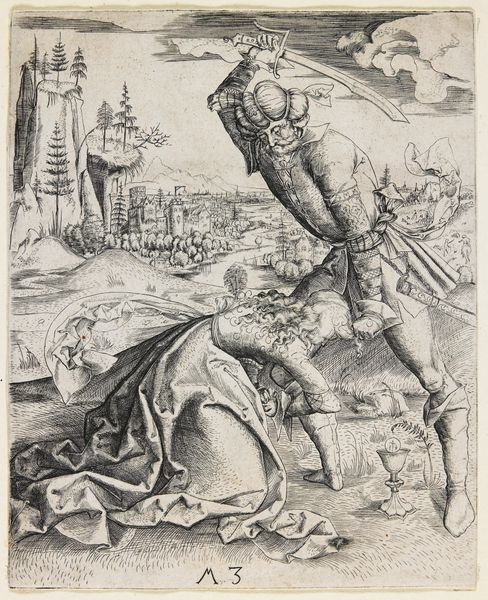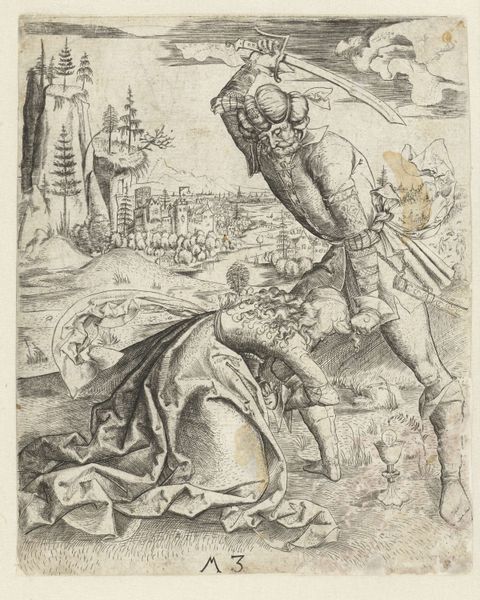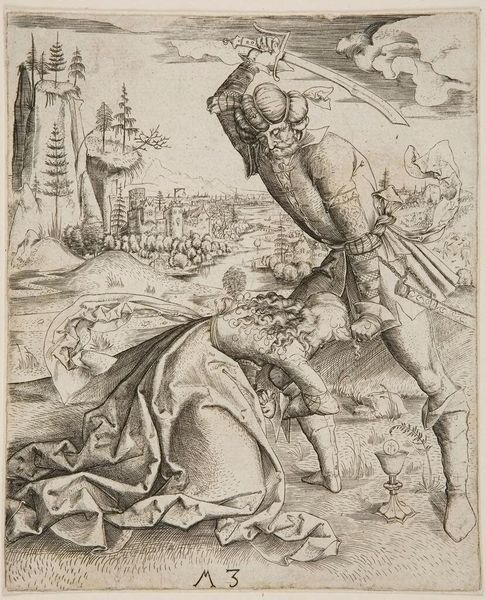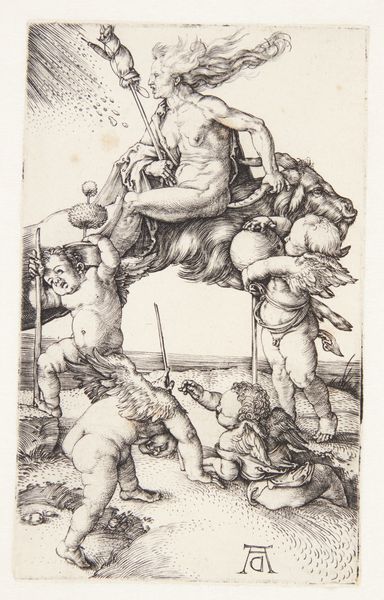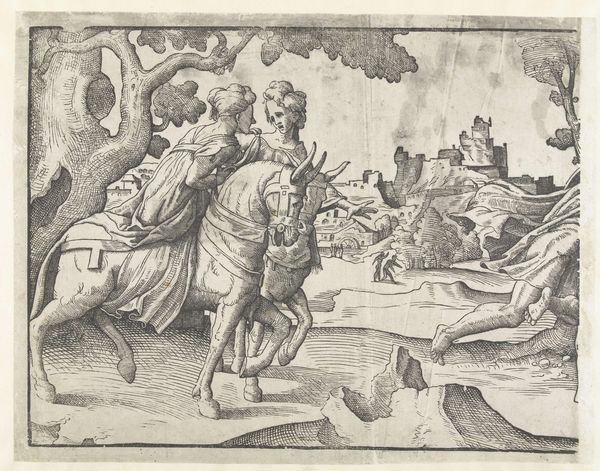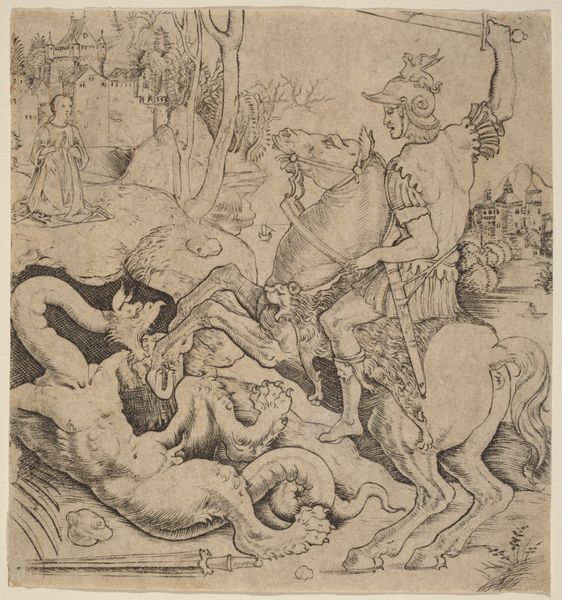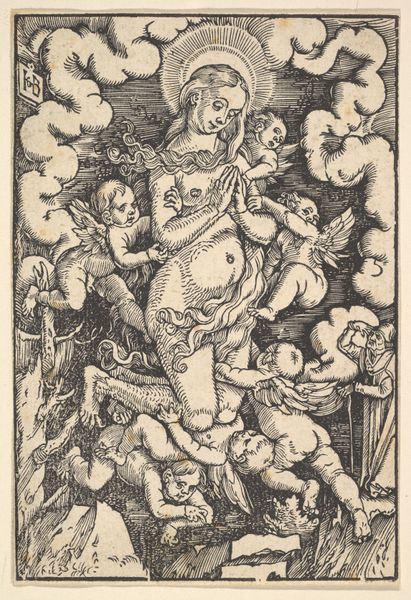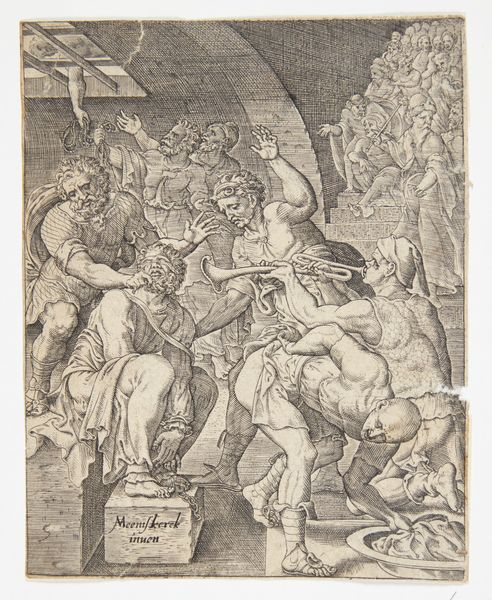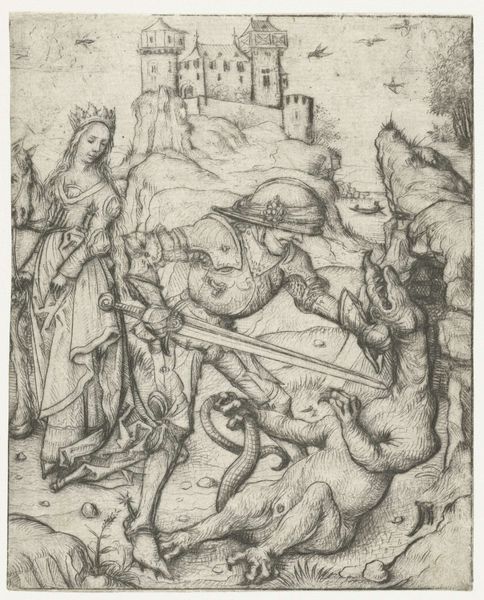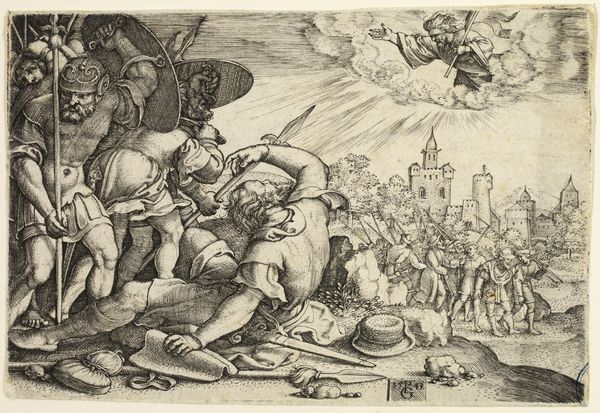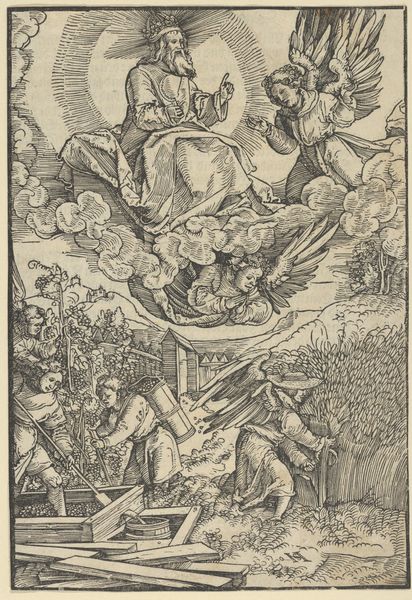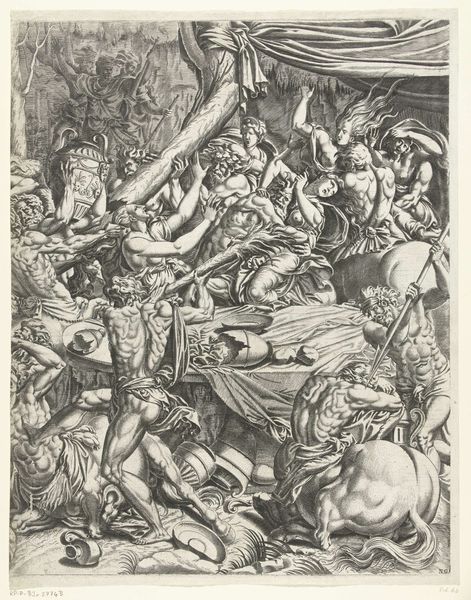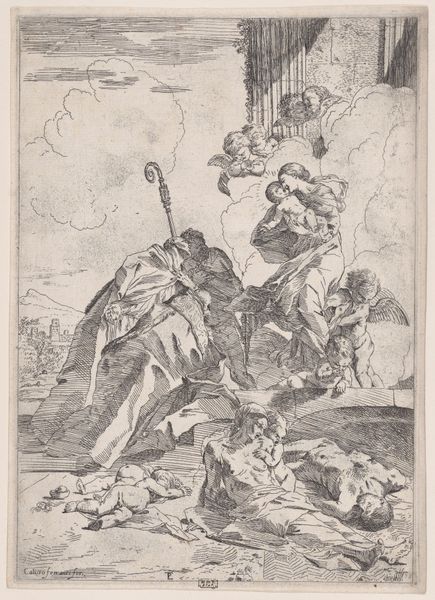
print, engraving
#
medieval
#
narrative-art
# print
#
figuration
#
history-painting
#
northern-renaissance
#
engraving
Dimensions: 152 mm (height) x 124 mm (width) (bladmaal)
Curator: Here we have "The Martyrdom of Saint Barbara" by the artist known only as Monogrammist MZ, dating back to around 1500. This piece is an engraving currently held at the SMK, the National Gallery of Denmark. Editor: Whoa, talk about intense. The guy wielding the sword looks seriously committed to his task. But it also strikes me as…theatrical, almost stagey, like everyone’s posing a bit. Does that make sense? Curator: Absolutely. The dramatic composition is quite typical for Northern Renaissance art, blending detailed realism with symbolic weight. Notice the meticulous depiction of the executioner's garb, contrasted against the kneeling figure of Saint Barbara. Editor: That contrast is everything. The softness of her robes… and what's that little goblet thing beside her? Curator: That would be a chalice, one of Saint Barbara's key attributes. It represents her association with the Eucharist and protection against fire and sudden death. Also, observe the tower in the background—another recurring symbol connected with Saint Barbara, referencing her imprisonment before her martyrdom. Editor: Right, so we're looking at layers upon layers of symbolic meaning piled onto a violent scene. I wonder if it made the act more digestible or more horrifying to viewers back then? Curator: I think both were at play. The engraving served not only as a devotional aid, reinforcing faith through Saint Barbara's story, but also as a potent reminder of the consequences of unwavering belief in a time of religious upheaval. It speaks to cultural anxieties and the power of iconography. Editor: That connection with upheaval gets me thinking. You see that stag leaping amidst the pines in the left side? Is that some obscure, subtle symbol too or merely decorative? It looks quite out of sync to me, quite strange. Curator: The Stag is out of context for the Barbara tale itself, you’re right. Stags and deer feature across works of the period and in varied ways, often connected to ideas of either purity or wildness. I suspect here the contrast is purposeful and, maybe more crucially, also fashionable. Editor: So this really gives you something to chew over - it presents multiple interpretations and symbolic meanings. Curator: Indeed, an intriguing intersection of religious narrative, societal tensions, and artistic trends—a microcosm of its era captured in a single print. Editor: Well, after that explanation I certainly look at the image with new eyes. You peeled back a lot. Thanks.
Comments
No comments
Be the first to comment and join the conversation on the ultimate creative platform.
